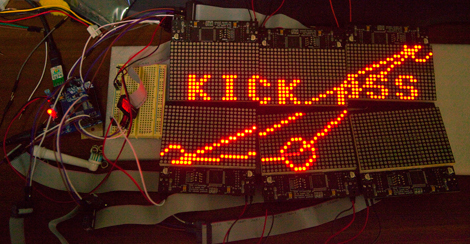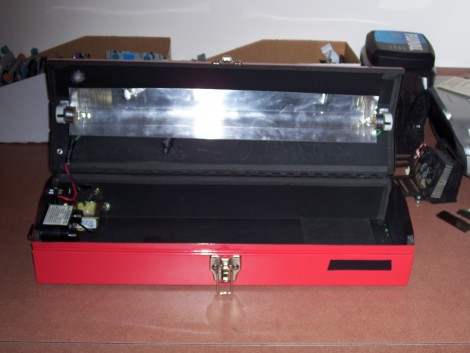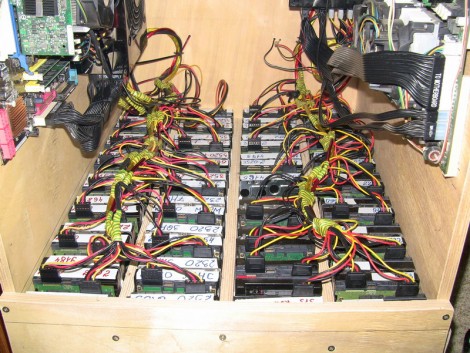
Forget flashlights, and leave those burning lasers at home, [Ben Krasnow] built a search light using a 1000W xenon arc lamp. That box you see on the side of the trash-can housing countains a starting circuit that shoots 30 kilovolts through the xenon lamp to get it started but it is separate from the power supply. [Ben] started experimenting with the lamp back in April but recently finished the project by using the inverter from an arc welder to get the 50 amps at 20 volts needed when the lamp is on.
The insert on the left of the image above is an outdoor picture of the beam. You can make out a tree at the bottom. Take a look at the video after the break for a full walk-through of the circuitry and some test footage of the finished product.
Continue reading “1000W Search Light – Now Build A Bat Signal”


 Th
Th












